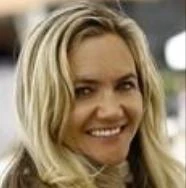
While historically confined to medical and academic research, challenge funds – competitive financing for innovative solutions to entrenched problems – have gained traction in the international development field over the last decade.
Pioneered by the UK Department of International Development (DFID), challenge funds have championed transformational disruptive technologies, such as M-Pesa, Kenya’s mobile money transfer service. The electronic payment system, which allows users to withdraw, deposit and transfer cash through their mobile phones, started as a pilot project funded by DFID’s Financial Deepening Challenge Fund. Today, more than two thirds of Kenyans use the channel, and the innovation has changed the scope of financial inclusion programs globally.
In 2015, the Global Facility for Disaster Risk and Reduction (GFDRR) along with DFID launched the first Challenge Fund focused on funding disruptive technologies and approaches in the disaster risk identification field. The fund, designed and implemented in-house, recently received the President’s Award for Innovation and the second round is currently on-going. Here’s a few things we’ve learned along the way:
1. Local demand matters While this might sound rather obvious, tools and approaches tailored for developing country users are often supply, rather than demand, driven. Conversely, we found that projects that develop tools in response to an on-ground demand or request is more likely to be understood, accessed, maintained, and used after the project ends.
2. True partnership is critical Through our monitoring and evaluation case studies, we also learned that careful needs assessments and nurturing of long-term partnerships with local actors was key to the success of projects. This partnership is characterized by the project leads initial attempt to understand the current partner practices, followed by joint effort to identify and fill the gaps together.
3. Implementing a challenge fund alongside other projects can improve effectiveness There’s great value in implementing a challenge fund project concurrent with other related projects. For example, the National Institute of Water & Atmospheric Research (NIWA) Drought Risk Visualization Challenge Fund project is being implemented along other hydro-met projects in pacific island countries. This ensures a greater probability of uptake as clients can see the link between the different products, in addition to reducing overall product cost as missions and trainings are shared between the different projects.

Disruptive technologies are sexy, and once an innovative, cheap, and effective solution has proven to be successful, everyone will want a piece of the pie. Take the Institut de Recherche pour le Développement (IRD), Real-time Urban Flood Risk Data via Cellphone Network Analysis project. The challenge fund supported the initial proof of concept in Ouagadougou, and once was there was some measure of success, we found that the project was replicated in Mali through the Korean Green Growth Fund, and later in Cameroon via the UN Global Partnership for Sustainable Development Data Fund.
5. There will be some projects that fail While there will be those ground-breaking technologies that will change the game altogether, there will be one or two projects that you’ll regret funding. Perhaps their failure will lay in the transition from theory to practice, or perhaps there will be a disconnect with local actors. Whatever the reason, these projects will be instrumental to your learning process.
6. Consult with experts We found that consulting with a wide group of external experts to be helpful in both our selection procedure, and in deciding which projects we continued to fund in phase II. The trick here is to ensure that your experts are not only technically inclined, but also that they represent the private, public, and non-profit sectors, as this diversity of thought will prove to be beneficial in meeting your theory of change and monitoring and evaluation framework.
7. The administrative process will take longer than you think You might already find running a competitive selection procedure on eConsultant to be an admin-heavy task, but when you receive over 250 expressions of interest, it’s a very different ballgame. You might find that a day’s task turns into a week, a week’s task into a month, and so on and so forth. The process will most certainly take longer than you expect, so be flexible.
8. You need an awesome team to deliver an innovative program Challenge funds, as their name suggests, can be pretty challenging to implement, and you need a good team to deliver an award-winning program. We were fortunate to work in a team that was technical, organized, and specialized – whether it was in monitoring, evaluation and learning (MEL), project management, open data, hydro-met or disaster risk modeling. But the secret to having a great challenge fund team is that they must all be innovative in spirit. After all, you cannot run an innovative program without an innovative team!



Join the Conversation